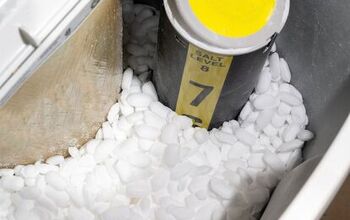Pipe Union Vs. Coupling: What Are The Major Differences?

The piping in your home or business will, for the most part, do its job quietly and efficiently. That is so long as it has been properly installed first. There are many aspects to the installation process, part of which is choosing between a pipe coupling or pipe union.
What is the difference between a pipe union and coupling? It all comes down to the method of sealing. A union makes use of a seal ring between a pair of joints. The coupling, meanwhile, has either a socket or thread used to create that connection.
Do You Need to Hire a Plumber?
Get free, zero-commitment quotes from pro contractors near you.

What are Pipe Unions and Couplings Used for?
Regardless of which kind of connection that you use, there is a universal purpose to both. Though they connect in different ways, both are fittings that allow for two pipes to unite together at a specific joint.
The good thing about these connections is that they allow these pipes to detach for future repair or replacement. Should one side of the pipe go bad, it can be split from the connection without causing a deformation in the pipes.
Both unions and couplings are also leak-proof. Being able to ensure that there are no leaks behind the walls or under the floors is crucial in any construction.
What is a Pipe Union?
A pipe union is a kind of fitting where two pipes are united so that they can be detached. The goal is to not cause deformation in the pipes when connecting or disconnecting. The pipe union causes a positive seal, which keeps the pipes together and prevents leaking.
These are commonly used to connect pipes that may have different calibers. Moreover, it is used to connect not only valves but pipes and instruments as well. They are generally required where precision and high pressure are necessary (medical and health, aerospace, fire, military, etc.)
What Materials are Pipe Unions Made of?
Pipe unions can come in a wide array of materials, most of which are metal. That said, they can come in rubber or plastic for greater elasticity and flexibility as well. It depends on the situation and use of the pipe unions.
The most common metals used are stainless steel, aluminum, brass, copper, cast iron, and bronze. The choice of metal depends on the condition of the area and the required durability and stability of the pipe union. Check this out if your copper union pipe is leaking.
What are the Types of Pipe Union?
It is important to know that not every pipe union is the same as the next. There are two basic types when it comes to pipe unions. Those are flange unions and ground joint unions.
The good news is that there is one major difference between the two types. A flange union has just two pieces to it while the ground joint union has three. Both serve generally the same purpose but one may be easier to use than the other.
What are the Advantages of a Pipe Unions?
Pipe unions are leak-proof, for starters. This is of the utmost importance whenever piping is concerned. The last thing you want is for your pipes to leak behind the scenes, playing havoc without you even being able to see that there is an issue.
Pipe unions are also great for monitoring and regulating devices. They can be used when it comes to inserting regulating and metering devices regardless of the plumbing application. Great for managing water usage efficiency, for example.
Perhaps the most important aspect of pipe unions is that they are versatile enough to join different sizes. When it comes to pipe cutting and fitting, the human element is always there. But pipe unions are versatile enough that they be installed even if the pipes are different sizes. Great for a quick connection that doesn’t require refitting.
What is a Pipe Coupling?
A pipe coupling is essentially a short tube, also known as an outer joint. The coupling connects two pieces of piping together, retaining the integrity of both pipes. The good news is that pipe couplings can be used to join pipes that are either equal or different in size.
Pipe couplings can also be used to connect more than two pipes. The caveat here is that the connection would either need to be in a T- or cross-shape. Still, they provide a level of versatility and ease of installation that pipe unions may not. They are common for residential and civil construction applications, for instance.
Tighten it up if your toilet coupling leaks.
What are the Features of a Pipe Coupling?
There are a few crucial features in a pipe coupling. For one, they come in just about any standard size and are available for nearly any type of pipe that you can think of. That makes pipe couplings extremely versatile when it comes to plumbing solutions.
Even better, pipe couplings come in a number of finishes. If matching up your coupling to the pipe is important, you can do that. You can also opt for a more durable material should the need arise, providing more flexibility in that manner.
Pipe couplings are also quite durable. Given how easily they can mount and dismount, one may assume that they wear down more quickly. But when properly installed, pipe couplings can last years with little to no issue. Compare no hub couplings to flexible couplings.
What are the Types of Pipe Coupling?
There are two types of coupling that you need to consider: rigid and flexible couplings. Both have their own distinct advantages and uses, so it is important that you know which kind of coupling you are using during the connection.
Rigid couplings are most commonly used to connect shafts or other rotating members. They are compact and allow for a greater transfer of motion and torque. If you are looking for zero backlash, you would want to go with a rigid coupling.
A flexible coupling, meanwhile, connects two shafts that are end-to-end in the same line. The reason is to transmit torque from one shaft to the other, which causes them to rotate in unison. The other is to compensate for the little bit of random movement and misalignment that can occur between the two shafts.
What are the Advantages of a Pipe Coupling?
There are more than a few advantages to be had by using couplings for your pipe fitting. For one, couplings are super easy to install. They use a clamp system, making them a preferred choice among plumbers.
Couplings can also be used for a wide array of flexible piping operations. No matter the system, couplings are able to seal off the pipes and will stand up to the test of time. They are also chemical resistant and even root-proof, which can be a problem for properties in heavily wooded areas.
Finally, couplings are designed to be leak-proof. That is perhaps the most important aspect to any connection. The last thing you want to contend with is a leak somewhere in your pipe connection. You can ensure it doesn’t come from your coupling.
Do You Need to Hire a Plumber?
Get free, zero-commitment quotes from pro contractors near you.

What’s the Difference?
As you can see, the two connectors are quite similar in many ways. So, what is the real difference between the two?
The difference comes down to the pressures that they can withstand and the ease of installation. Couplings tend to be the easier of the two to install. Look further if your toilet coupling nut is leaking.
Because they are user-friendly, they are most often used in civil construction and agriculture.
Pipe unions, meanwhile, are built to handle more high-pressure connections. Moreover, they also provide greater precision than couplings. So, it is not uncommon to find pipe unions in sectors like aerospace, fire, military, electric power, gas, nuclear power, and the medical field.

Ryan Womeldorf has more than a decade of experience writing. He loves to blog about construction, plumbing, and other home topics. Ryan also loves hockey and a lifelong Buffalo sports fan.
More by Ryan Womeldorf



























